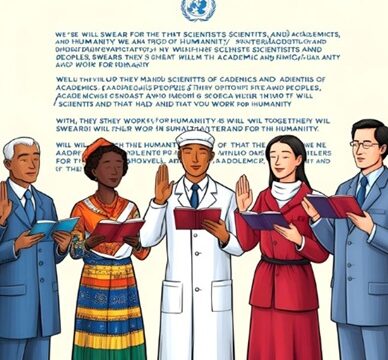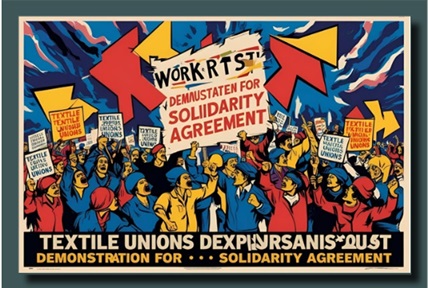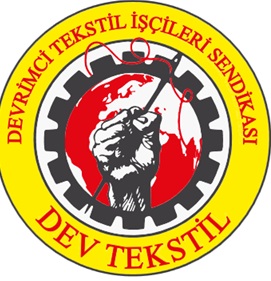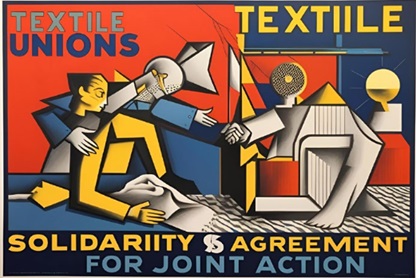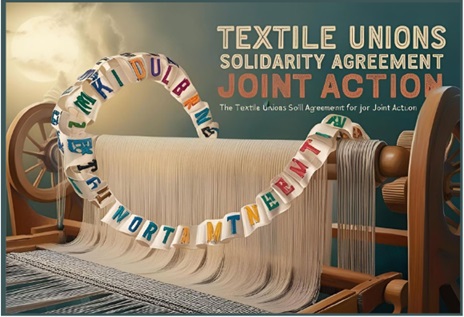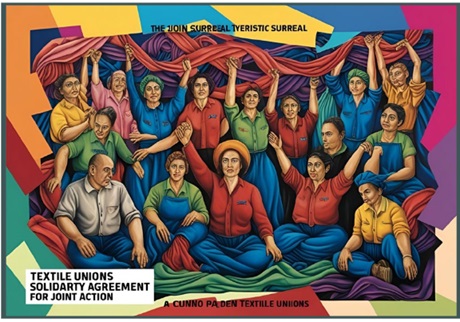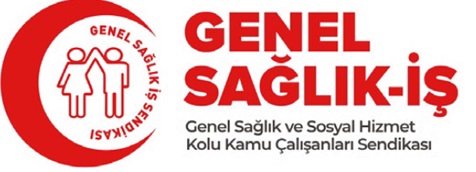Rebecca NOMUSABI
Uganda Textile, Garment, Leather and Allied Workers‘ Union|UTGLAW
PREAMBLE.
The Uganda Textiles union which had its greatest strength in the north, called a strike of textile workers in 1934 to protect worsening working conditions during the great depression
The union’s struggles were traced way back in the 1950s when the former colonial Government set up the Nyanza textiles.
The workers due to dissatisfaction of the poor working conditions organized themselves and formed the union which was called Nyanza textiles union.
Uganda Textiles Garments Leather, Plastics and Allied Workers’ Union and one of the huge unions in Uganda, was formed in 1958 and registered in 1979 and registered as the ninth trade union (TU, No 9).
Before the structural adjustment program the union had over 18,000 memberships, well organized with a strong representation in the textiles industries. The union had significant collective bargaining power, allowing it to negotiate better wages, benefits and working conditions for workers.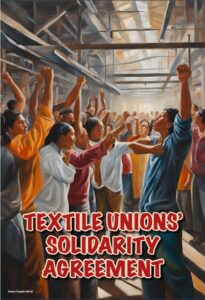
After the structural Adjustment Programs the union went through turmoil and became weak with low union power and collective bargaining abilities because most companies in the sector became privatized which led to changes in ownership, the industry became more informal with more workers in precarious or informal employment.
The union now with membership of about 7,000 subscribing members represents workers in the garments, textiles, leather and the allied Industries i.e. foam mattresses, shoes, plastics, blankets etc
- The Uganda Textiles, Garments, Leather and Allied Workers’ Union (UTGLAWU) has been actively fighting for workers’’ rights in Uganda’s textile and garment industry.
- The union has engagement with the Government to demand recognition and enforcement of labour laws by lodging in a petition of non compliant/stubborn employers.
- The union has engaged in the campaign to ratify the ILO C190 on GBV & SH highlighting the need to address violence and harassment in the world of work targeting the youth and women. This has been fostered by the support of IndustriALL Global Union Federation
- The union is struggling to broaden its scope to include informal workers, recognizing the need to protect their rights.
- One of the major challenges they have faced is getting recognition from Chinese owned factories.
SOLIDARITY
Solidarity refers to the unity and mutual support among workers, a formal commitment to cooperate and support each other in achieving common goals.
Trade unions has a huge responsibility to fight for the unification of textiles since we are the leaders of dilemmas in humanity and dilemmas are not limited to one area hence globalization.
It’s therefore, crucial for achieving common goals, improving working conditions and promoting workers’ rights particularly in the textiles, garments, leather and the allied sectors.
OBJECTIVES
- Promote solidarity and cooperation among textiles unions
- Enhance collective bargaining power and negotiate better wages and working conditions
- Support each other in disputes, strikes or lockouts.
- Share knowledge, expertise and best practices.
COOPERATION.
Cooperation and coordination points are very important and core towards implementation of other activities.
This involves collaborative efforts and mutual support among unions to achieve shared objectives.
Currently textiles industry is majorly dominated by informal economy which is diversified set of economic activities, enterprises, jobs and workers that are not regulated or protected by the state. Originally applied to self employment in small unregistered enterprises. It has been expanded to include wage employment in unprotected jobs, activities that have market value but are not formally registered. They lack the education and skills for formal employment or are too poor to access public and financial services.
KEY ISSUES FOR COLLECTIVE ACTION.
- Job security i.e. layoffs, redundancies , outsourcing
- Health and safety issues / standards at workplaces
- Wages and benefits focusing on improving wages, benefits and working conditions for workers
- Negotiations in the Collective Bargaining Agreements. Especially for inclusion of women and youth specific issues like maternity health protection, reproductive rights, sexual harassment and violence, breast feeding mothers etc.
- Training and education
- Campaigns to create awareness.
- Research and documentary to have literature on matters of workers
- International legal platform aimed at facilitating cooperation among textiles unions and other stakeholders on issues that require a collective response. This can also address global challenges like climate change, pandemics and economic inequality. However, these platforms may face challenges related to jurisdiction, enforcement and the balance of power among participating stakeholders.
STRATEGIES;
- Communication network i.e. media. Establish open and transparent communication channels / system. To have collectively responsible study i.e. virtual network find ways of dealing with each other hence take common actions.
- Provide education and training on solidarity and collective action. Engage in public education and awareness raising campaigns to understand that struggles exist.
- Develop a clear inclusive and participatory decision making process active participation and involvement from all member unions.
- Foster alliance with labour unions, community groups and progressive organizations.
- Lobby and advocacy for policy changes to promote workers’ rights and interests at the local, national or international level.
- Support worker strikes and labour actions
- Addressing multiple forms of oppression (race, class, gender etc simultaneously is necessary
WAYFORWARD
- Develop a unified strategy for collective action to involve coordinated bargaining and mobilization
- Schedule regular reviews of the agreement
- Define procedures for revising or amending the agreement
- Establish a joint decision making process
- Define procedures for resolving disputes or conflicts.
- Capitalists keep workers in fragmentations / divided into small groups so the need to come together to confront the struggles but at global level
- Intensify research and documentation to have literature on matters of workers/unions especially textiles sector.
IMPLEMENTATION AND MONITORING
- Outline the responsibilities of each union / organization and or Country.
- Establish a monitoring mechanism to ensure compliance.
CONCLUSION
Textiles unions don’t give up because we still have the potential and opportunities amidst a lot of challenges to fight the crisis of capitalists because power lies in our hands who do production.
- Need to take solidarity importantly to achieve our common goals
- To achieve cooperation especially increased bargaining power and improved working conditions for workers
- Need to discuss the challenges and obstacles that may arise and how to overcome them
- Share examples of successful solidarity agreements or joint actions.




